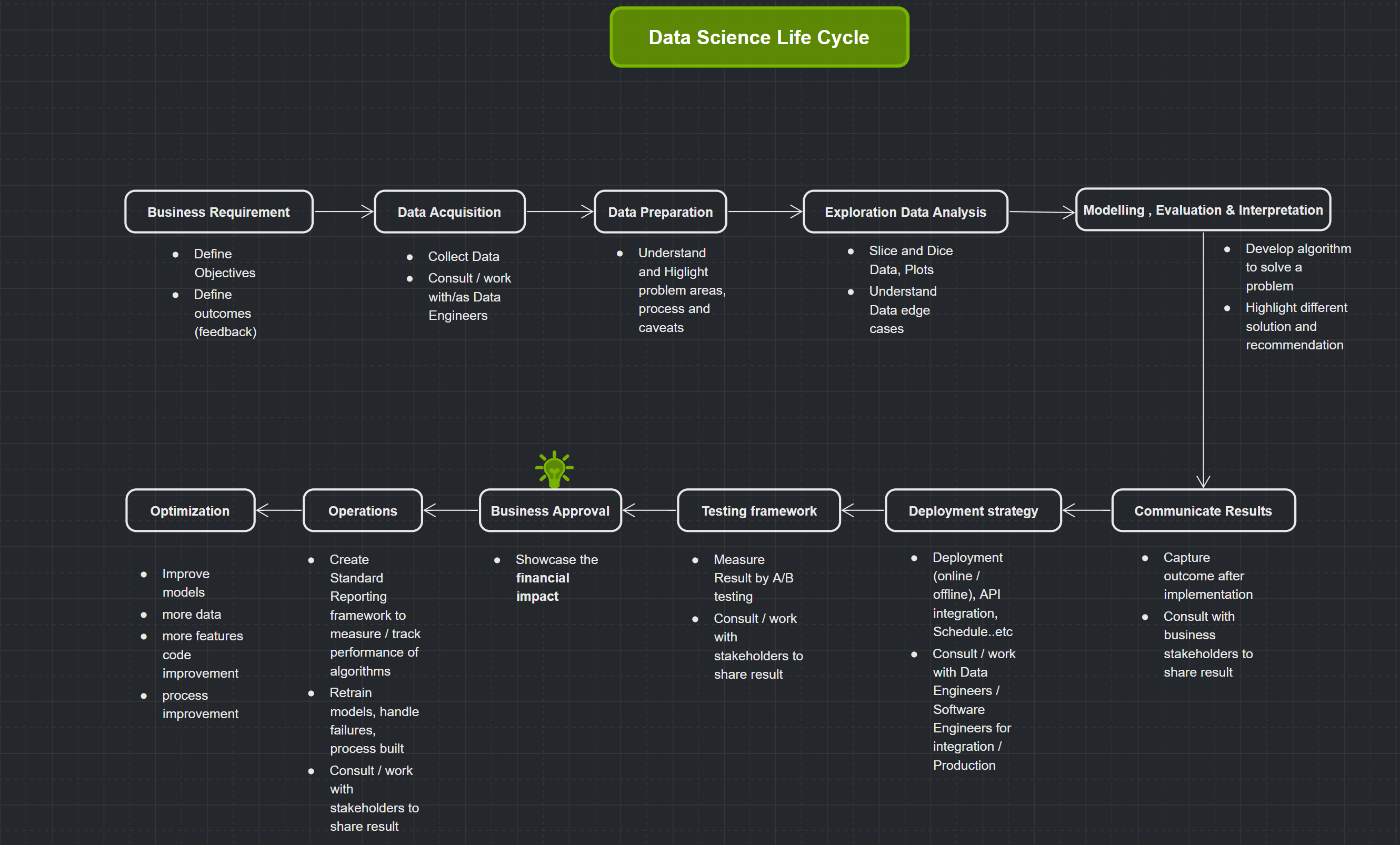Data Science Framework in Industry
Well, I don’t want to go over another post on Data Science framework that you can find on the Internet by just googling it. I like the CRISP-DM life cycle and widely used and know in the industry. You can find the details here. However, I see a gap in educational content over the framework widely used in Industry.
Below are the steps of the newly adopted framework. In essence, it’s an extension of CRISP-DM. It is the sequence of the phases and is not strict and moving back and forth between different stages as it is always required.
‘
Below is the overview of DS framework, I will use this DS framework and solve a business problem in future post:
Business Requirement
- Define Objectives - Define outcomes (feedback)Data Acquisition
- Collect Data - Consult/work with/as Data EngineersData Preparation
- Understand and Highlight problem areas, process, and caveatsExploration of Data Analysis
- Slice and Dice Data, - Plots Understand Data edge casesModelling , Evaluation & Interpretation
- Develop the algorithm to solve a problem - Highlight different solution and recommendationCommunicate Results
- Capture outcome after implementation - Consult with business stakeholders to share the resultDeployment strategy
- Deployment (online / offline), API integration, Schedule..etc - Consult / work with Data Engineers / Software Engineers for integration / ProductionTesting framework
- Measure Result by A/B testing - Consult/work with stakeholders to share the resultBusiness Approval
- Showcase the **financial impact **Operations
- Create Standard Reporting framework to measure/track the performance of algorithms - Retrain models, handle failures, a process built - Consult/work with stakeholders to share the resultOptimization
- Improve models - more data - more features code improvement - process improvement
Reference:

